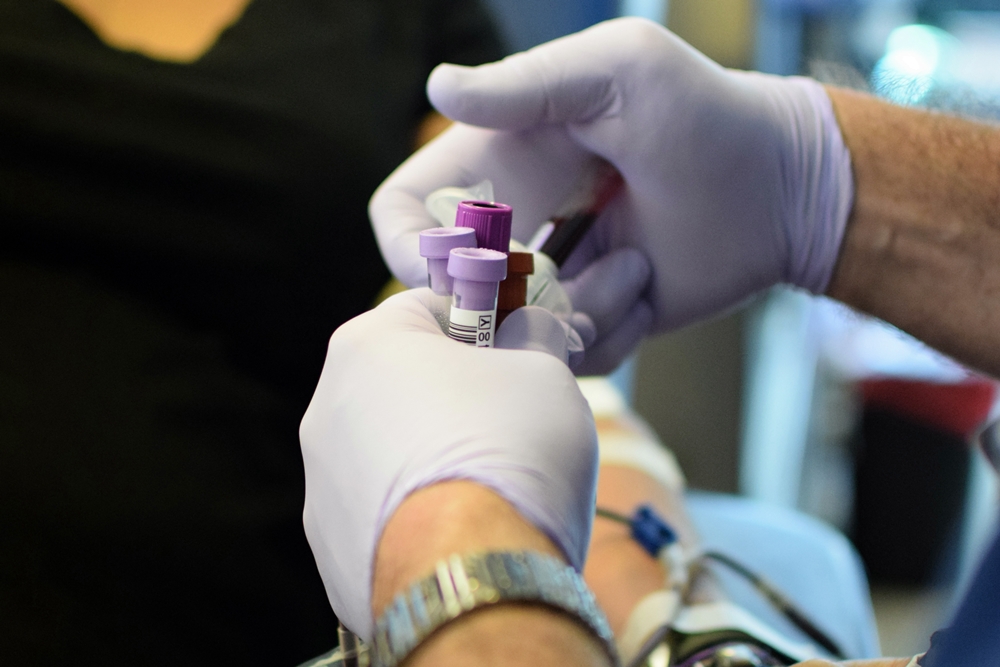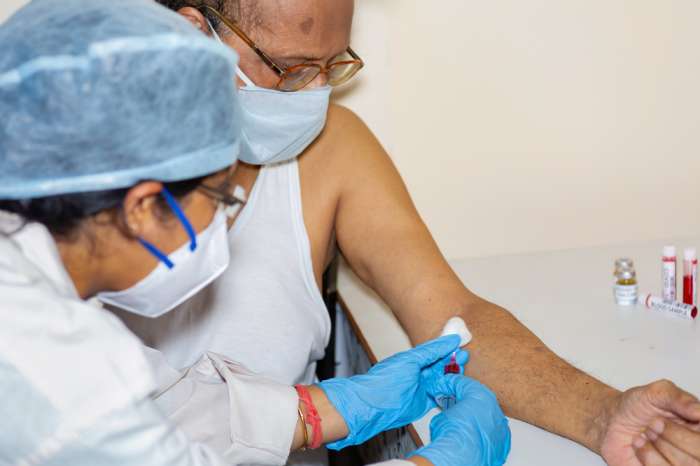This article is a part of a series by The Better India to share verified information about COVID-19 care. While several posts on various aspects of fighting COVID-19 are being circulated on social media and messaging services like WhatsApp, we urge you not to trust unverified content. To separate fact from fiction, we will be sharing the videos and content with doctors and experts and bring you their responses with scientific research-backed information.
Dr Bharat Gopal, Senior Consultant, Pulmonology, Fortis Hospital Vasant Kunj has been helping us make sense of the myriad of WhatsApp messages and forwards doing the rounds. In this article, we ask Dr Gopal how to decode what CRP, D-Dimer, IL6, and HRCT tests mean for a COVID-19 patient.
Q 1. What does CRP mean? If my reading is slightly elevated, what does it indicate?
Dr Bharat Gopal: CRP stands for C-reactive protein, which may be raised in infections caused due to inflammatory reaction and related tissue destruction. One possible explanation for the rise of CRP levels when a person is COVID-19 positive is the overproduction of inflammatory cytokines which are released by the body to fight the virus. However, when the system hyper activates, it can damage our own cells, especially the lung tissue.
Rather than one value, it’s the clinical presentation with rising CRP which has more importance.

What is important to note here is that usually, a blood test to determine the CRP value is done on day five or six. Only in cases where the condition of the patient has worsened, which in turn warrants a change in therapy, is the CRP test prescribed earlier.
If CRP is more than 70mg/L, even with normal SPO2-, it could be an indication of impending cytokine storm, which needs immediate interventions.
Q2. Does a high D-dimer reading necessarily mean I have to take blood thinners and steroids?
Dr Bharat Gopal: D-dimer is a degradation product of crosslinked fibrin. It is a commonly elevated marker in patients with COVID-19. D-dimer levels correlate with disease severity and are a reliable prognostic marker. However, no single reading will decide the therapy.
Patients with high risk of thromboembolism will be started on anticoagulant therapy. However, remember that D-dimer has low specificity, as there are many other conditions with ongoing activation of the haemostatic system in which D-dimer can be elevated, such as pregnancy, malignancy, trauma, liver disease (decreased clearance), heart disease, sepsis or as a result of haemodialysis, CPR or recent surgery.
Hence the physician has to decide in clinical context. Do not self-medicate or self-diagnose.
Q3. What does IL-6 mean, and what numbers in it should worry me?

Dr Bharat Gopal: IL-6 is one of the key mediators of inflammation and viral cytokine storm in COVID-19 patients, i.e. when the body shows a hyper immune response. We have found IL-6 to be an effective, readily implementable test that can help provide substantial insight into proper patient management.
However the delay in sample collection and early measurement in the lab leads to errors in the results. Hence, it’s more important to do this in case of hospitalisation in moderate to severe cases, where an IL-6 therapy is being planned. For mild cases, CRP can be itself a good marker
Q4. Is HRCT meant for everyone? What should determine whether I need a scan or not?
Dr Bharat Gopal: This is a CT scan of lungs to look at the involvement in COVID. Do note that not everyone needs to get a CT scan done.
HRCT chest is being inappropriately used by both doctors and patients for mild cases, who do not have hypoxia.
It is not to be performed in every patient with a RT-PCR positive report.

HRCT chest is not to be used for diagnosis of COVID-19. The only exception to this may be in patients who have moderate to severe symptoms and signs of COVID-19, but have negative RT-PCR report or for any alternate diagnosis.
Early scans lead to a false sense of security, as changes may occur later in the disease course. The CT scoring indices are of help in triaging patients in the hospital but cannot be a clear prognostic indicator.
Let the doctor decide when a CT is required. Do not, under any circumstances, self-treat.
(Edited by Divya Sethu)
No comments:
Post a Comment